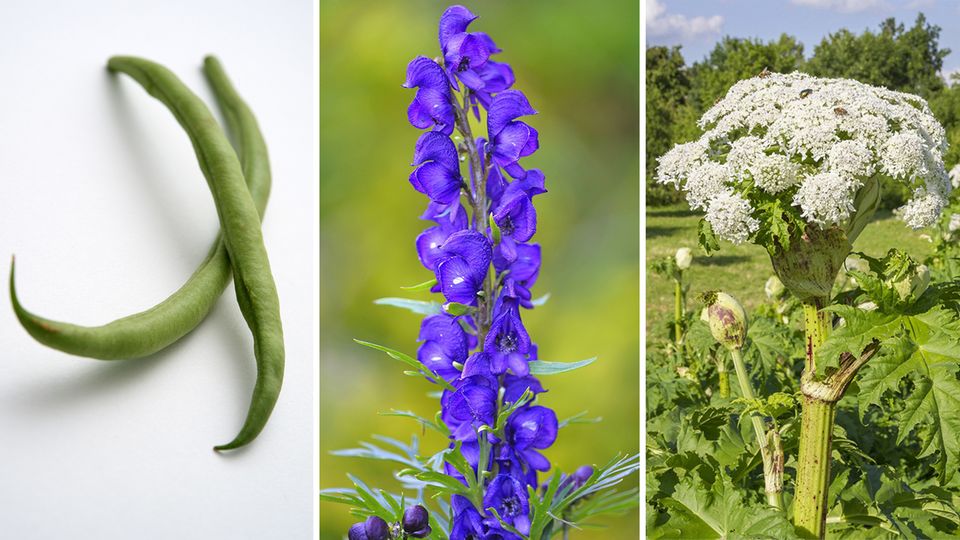Tips for hobby gardeners
Cutting roses in spring: You should avoid these mistakes
If you want to enjoy your rose bushes in summer, you should give the plants the air they need to breathe using secateurs in March
© Robert Przybysz / Picture Alliance
When spring begins, the hearts of thousands of allotment gardeners beat faster. Vegetable beds need to be prepared, many fruit trees need pruning. But what about the rose bushes? The star answers the most important questions.
Allotment gardeners who regularly provide their loved ones with fresh ones If you want roses to surprise you, you have to do something about it. The popular flowers with the prickly branches need to be looked after and cared for, especially after the cold winter months, so that they can develop their full splendor in the summer. And not just once, but ideally several times. To ensure that the first bloom is followed by subsequent blooms, there are a few things to consider. Mistakes can have fatal consequences, especially when pruning roses. We explain what hobby gardeners most often do wrong when pruning roses and how to do it right.
Common mistakes when cutting roses
- the rose scissors used are not sharp enough
- the canes are cut back too much or too little
- the scissors are placed too close to the eye
- Shoot is cut over an inwardly growing bud
- Single-flowering varieties are cut back
Tip 1: Under no circumstances should you skimp on tools
A good Rose scissors made of stainless steel costs around 50 euros in specialist shops. Of course, cheaper models also work. However, always make sure that the blades are sharp. If you attack the shoots with blunt scissors, they could be crushed or torn off. So you injure the plant – and that can affect the growth of the entire rose bush. Rose scissors also need to be cleaned regularly and thoroughly. This will prevent the rose from being attacked by germs or fungal spores.
Tip 2: Stay away from once-blooming plants
Older rose varieties in particular cannot be replanted. Their trick: They plant the flower buds the previous year and then only reveal their full beauty once – in early summer. The problem: no new flowers form on the new shoots in the same year. So they won’t produce a single flower in the summer if you prune them in the spring just as radically as roses that bloom more often. Tip: Light such roses only slightly in spring so that the crown does not become too dense.
Tip 3: Keep your distance from your eyes
The eyes, i.e. the places where a rose can form side shoots, play an important role when pruning roses. With a little imagination, a rose eye resembles a mouth with a tongue sticking out. And that’s exactly what you shouldn’t get too close to when pruning in spring. If you cut the shoot too close to an eye or side shoot, they could dry out. What would be left behind – instead of a fragrant blossom – would be an ugly stub. Therefore, place the scissors about five millimeters above the top eye and cut the shoot slightly downwards. This means that no water can collect at this point, which provides a perfect breeding ground for pathogens.
Tip 4: Buds: Hui on the outside, yuck on the inside
Of course, beauty is always in the eye of the beholder. But hobby gardeners should also be a little vain. So that passers-by can enjoy your rose bushes even more, you should try to give the stick a horizontal umbrella shape. This can only be achieved if you make sure to only trim the shoots above buds that are growing outwards or eyes that point outwards. The inside of the rose should be kept as light and airy as possible. So if you cut the shoot above an inward-looking eye, the new side shoot will also grow inwards.

Tip 5: Find the right size for the pruning
The question that hobby gardeners probably ask themselves most often when using rose shears (Here is an anvil model from Löwe)standing in front of the rose bush: How hard can I prune? The rule of thumb applies to all types: the larger and stronger the rose, the less you cut it back. This means that in spring the five strongest shoots of the rather delicate bed and noble roses should be shortened to three to five eyes and the rest cut off. The following applies to shrub roses: cut back to a maximum of half the shoot length. Otherwise, long and unstable shoots will develop. The approach to climbing roses is different again. Here, last year’s shoots remain uncut and are only thinned out slightly.
And one last tip: Even if your fingers tingle earlier. Be patient and wait until severe (night) frosts are no longer expected before cutting roses. A good indicator of the right time is the yellow flowers of the forsythia. And depending on the weather, walkers can enjoy it between mid/late March and early April.
Sources:“ndr.de”; “My beautiful garden”; “Garden care tips”
This article contains so-called affiliate links. Further information are available here.


